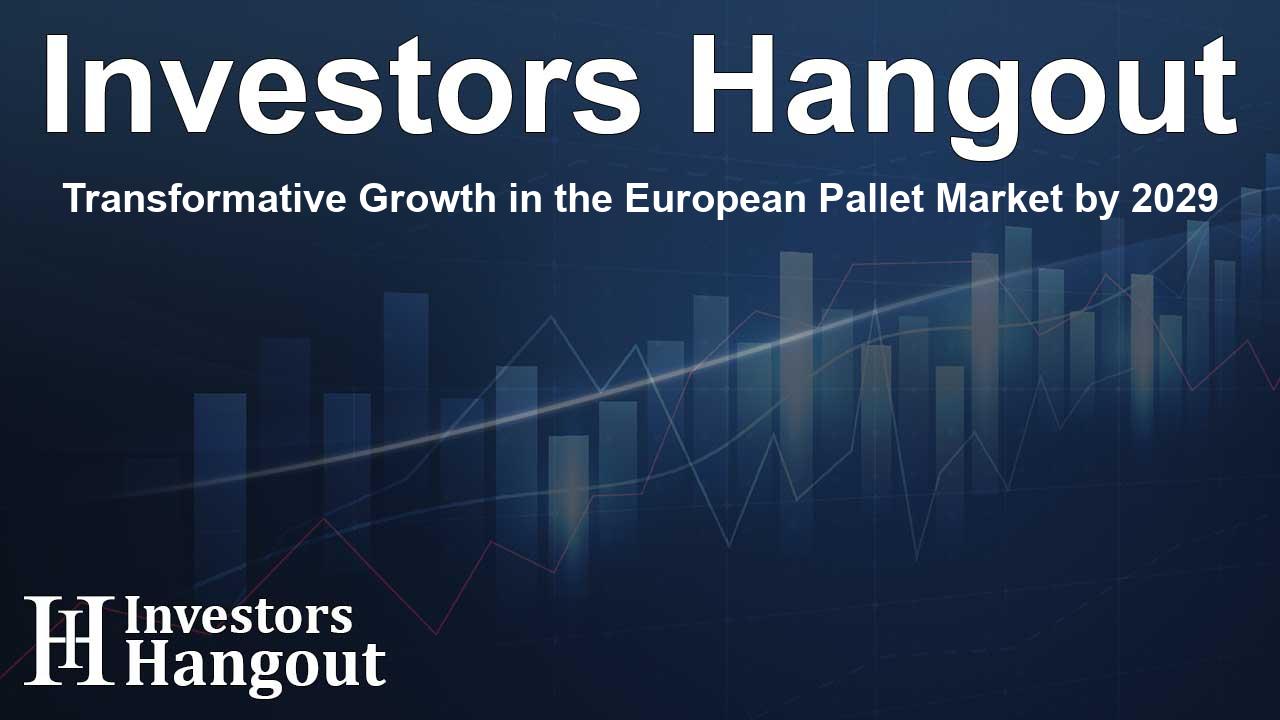Transformative Growth in the European Pallet Market by 2029

Transformative Growth in the European Pallet Market by 2029
The European pallet market is on the cusp of a significant transformation, poised for remarkable growth in the coming years. Estimates suggest a potential increase of USD 7.14 billion from 2025 to 2029, primarily driven by the surging demand for pallets across various sectors, including shipping and load handling. As businesses continue to adapt to the evolving landscape, we can expect an impressive annual growth rate of 5.1% during this forecast period.
The Role of AI in Market Growth
One of the key factors contributing to this impressive growth is the integration of artificial intelligence (AI) into pallet utilization. This technological evolution opens new avenues for enhanced efficiency and productivity within the supply chain. AI applications in the pallet sector allow for better insights into inventory management and logistics operations, providing firms with the tools to streamline these processes effectively.
Real-Time Tracking and Monitoring
AI-powered pallets incorporate sensors and communication devices that enable real-time tracking of pallet movement and condition. These advancements allow businesses to monitor environmental variables such as temperature and humidity—critical for industries such as pharmaceuticals and food and beverage. The data generated through these systems is invaluable, aiding in the optimization of logistics, lowering operational costs, and enhancing overall supply chain efficiency.
Market Trends Influencing Pallet Demand
The European pallet market is currently experiencing several transformative trends. Among these, the growing emphasis on food safety regulations drives up the demand for reliable and compliant pallets. Additionally, an increasing number of distribution centers are being established, fueled by the surge in online shopping. This need for efficient logistics systems is resulting in faster delivery services and heightened consumer satisfaction.
Automation Enhancements
Technology is reshaping how pallets are handled and utilized within warehouses. Automation now plays a crucial role, enhancing processes related to loading and unloading goods. Systems such as conveyor belts and robotic picking are increasingly being deployed to improve efficiency, minimize manual labor, and reduce error rates during warehouse operations.
Challenges Facing the European Pallet Market
Despite the promising growth prospects, manufacturers in the European pallet market face significant challenges, particularly the rising costs of materials. These fluctuations affect not only production profitability but also the pricing strategies businesses need to implement to remain competitive. As material costs rise, it becomes increasingly difficult for manufacturers to safeguard their profit margins.
Addressing Material Cost Issues
To mitigate these challenges, pallet manufacturers are being forced to seek innovative solutions. Emphasizing production efficiency and resource optimization is vital in ensuring profitability. Businesses must also remain agile, adjusting swiftly to changes in material availability—especially within industries dependent on wood, plastic, or metal inputs.
Market Segmentation Overview
The pallet market can be segmented into various categories, including product types, end-users, and regional geography. Each of these segments plays a crucial role in determining market dynamics. For product segmentation, pallets may be categorized into wooden, plastic, corrugated, and metal types. End-users include the food and beverage sector, transportation and warehousing, retail, and pharmaceuticals.
Looking Ahead
As we look into the future, the European pallet market is set to flourish, influenced by rising consumer demands and advancements in technology. The integration of AI and IoT will revolutionize operations and significantly enhance supply chain efficiencies. Companies will benefit from the adoption of new technologies that optimize inventory management while ensuring compliance with stringent regulations.
Frequently Asked Questions
What is driving the growth of the European pallet market?
The European pallet market is expected to grow significantly due to increased applications in shipping and load handling, along with the integration of AI for enhanced efficiency.
How is AI impacting pallet management?
AI enables real-time tracking and condition monitoring of pallets, improving logistics management and enhancing supply chain efficiencies.
What challenges does the European pallet market face?
The market is challenged by rising material costs, which impact production profitability and pricing strategies for manufacturers.
What are the key trends shaping the pallet industry?
Key trends include increased automation in warehouses, heightened emphasis on food safety, and growing demand for efficient logistics solutions due to e-commerce expansion.
What types of pallets are popular in the European market?
In Europe, wooden, plastic, corrugated, and metal pallets are prevalent, serving various end-user industries such as food and beverage, transportation, and pharmaceuticals.
About The Author
Contact Kelly Martin privately here. Or send an email with ATTN: Kelly Martin as the subject to contact@investorshangout.com.
About Investors Hangout
Investors Hangout is a leading online stock forum for financial discussion and learning, offering a wide range of free tools and resources. It draws in traders of all levels, who exchange market knowledge, investigate trading tactics, and keep an eye on industry developments in real time. Featuring financial articles, stock message boards, quotes, charts, company profiles, and live news updates. Through cooperative learning and a wealth of informational resources, it helps users from novices creating their first portfolios to experts honing their techniques. Join Investors Hangout today: https://investorshangout.com/
The content of this article is based on factual, publicly available information and does not represent legal, financial, or investment advice. Investors Hangout does not offer financial advice, and the author is not a licensed financial advisor. Consult a qualified advisor before making any financial or investment decisions based on this article. This article should not be considered advice to purchase, sell, or hold any securities or other investments. If any of the material provided here is inaccurate, please contact us for corrections.
